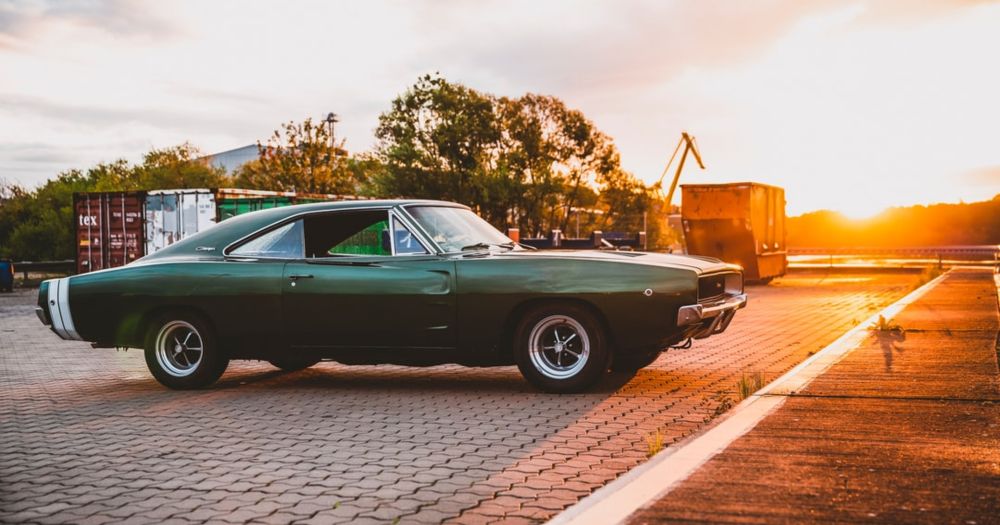
Pop Culture | Retro | 70s
4 Classic Muscle Cars From the 60s and 70s -- And How To Maintain Them

We all want to step back in time. There is a reason why products from the 50s, 60s, and 70s are considered classics. There are several different categories regarding the age of cars. Cars still in existence that were made between 1919 and 1930 are known as vintage cars, while antique cars are technically cars that are 45 years old or older. Cars actually become classic, by most standards, when they hit 20 years old, but that doesn't necessarily mean that a lot of us regard cars made in 2000 as classics! We still have an association between the classic label and muscle cars of the 60s and 70s, and with good reason. These cars are not only beautiful to look at -- often heavily featured in movies and TV shows that we consider classic as well -- but they're also well-built. Shelby's 654 small-block Cobras, as well as some 350 big-block versions, were built from 1962 to 1968, to bring up one example of a well-built muscle car from the 60s. They were built for speed and power, while also looking stylish in a way that contemporary cars often don't.
But despite their great looks and solid construction, muscle cars from the 60s and 70s are still quite old by vehicular standards, and you can't simply use them the way that you would use your typical car of today. And as different types of cars require different treatment, you can't assume that every classic muscle car can be treated and maintained in the same way. With that being said, let's look into the most popular muscle cars that car enthusiasts love, and how to keep them in shape.
1. 1968 Dodge Charger R/T
A lot of muscle cars were passing fads, popular for a brief amount of time without any truly longstanding impact on the car industry. The 1968 Dodge Charger R/T, on the other hand, only grew in popularity over time. For one thing, the car looks remarkably masculine, a true muscle car that doesn't have the same types of frills and unnecessary bells and whistles that hurt a lot of muscle cars more than they help them. The design itself has become famous, in part because of a hidden headlight grille that has become a strong identifier for the 1968 Dodge Charger R/T, along with its copious use of chrome. Though the Charger is overall a sturdy car, this means that you not only need to keep it in shape through regular tune-ups and careful usage but through fastidious cleanings and waxing in order to keep the chrome from fading or becoming damaged.
2. 1970 Chevy Chevelle SS 454
Now, this is a car that can still give you serious speed if you maintain it properly. The 1970 Chevy Chevelle SS 454 is considered the pinnacle of the Chevrolet among fans, and not just because it was made in 1970, considered one of the peak years for muscle cars in general and Chevy in particular. The car comes with 450 horsepower and has a sleek and compact body that can technically seat up to four people, though you should probably stick to two if you want to stay comfortable. When maintaining this car, you probably won't want to have it racing constantly, but if you outfit it with modern tires, you can reach thrilling speeds in a remarkably short amount of time. For that matter, this car has actually increased its value by 30 times since its initial release. So if you have one, don't let go of it!
3. 1964 Pontiac GTO
As one of the most famous and indeed one of the pioneering muscle cars, the 1964 Pontiac GTO was built to be both powerful and easy to drive. Its engine was the largest at the time, but its body was lightweight. This meant that drivers could get a lot of bang out of their buck, and the GTO name was actually meant to harken back to the Ferrari GTO. As with any classic muscle car, however, its power doesn't mean that it shouldn't be handled with care. You have to remember when thinking about how to maintain your muscle car, the fact that each year there are about 6 million car accidents in the United States. Even if you drive your car on a regular basis and are extremely careful, you have to consider the possibility that many people don't drive as carefully as you may. Therefore, you should limit the time that your Pontiac GTO spends on busy roads.

4. 1968 Plymouth Road Runner Hemi
There are a lot of reasons why the Road Runner is an eye-catching car, for more reasons than the fact that the name is reminiscent of a certain famous cartoon character. This car is another one with a body that isn't too over the top. It's meant to return to the basics and particularly serious masculinity. The car may look rather simple, but its 425 horsepower is anything but, making it a car that packs quite a punch. Furthermore, Plymouth actually paid Warner Brothers $50,000 to use the Road Runner name, tying the car authentically to the character, and they paid another $10,000 to develop a car horn that mimicked the character's distinct "beep-beep" sound. But as strong as the car is, you shouldn't leave its maintenance and its integrity up to chance. Something as seemingly simple as a windshield accounts for about 30% of all auto insurance claims.
A lot of what goes into the care and keeping of muscle cars is really dependent on common sense. Regular maintenance and cleanings that you would apply to any car are necessary, but you need to remember that a classic car needs them more frequently. You shouldn't modify the car in any way, and keep it as original as possible. Finally, the car must be stored in a place like the prized possession that it is. This is all key to maintaining a classic vehicle.



